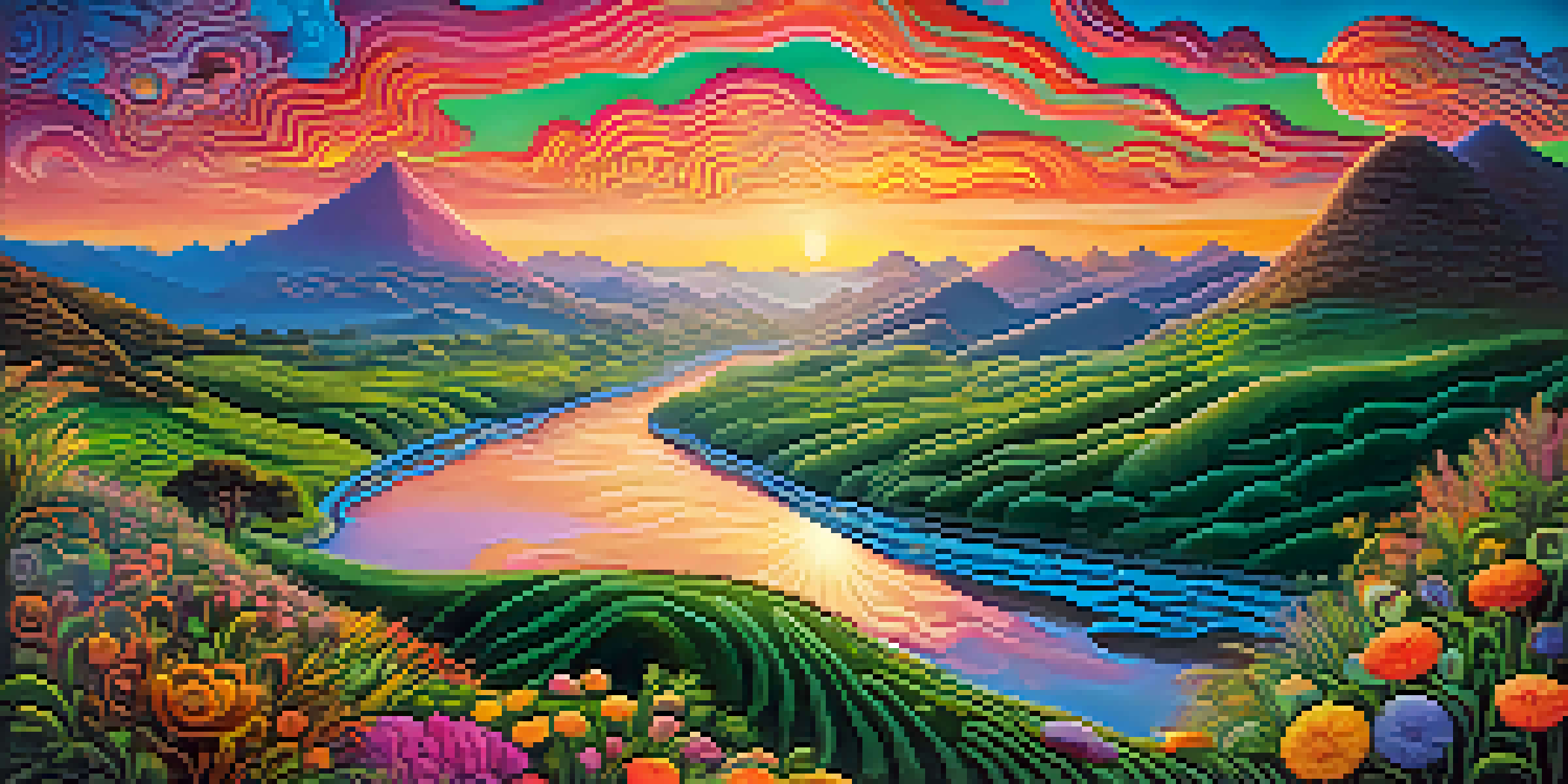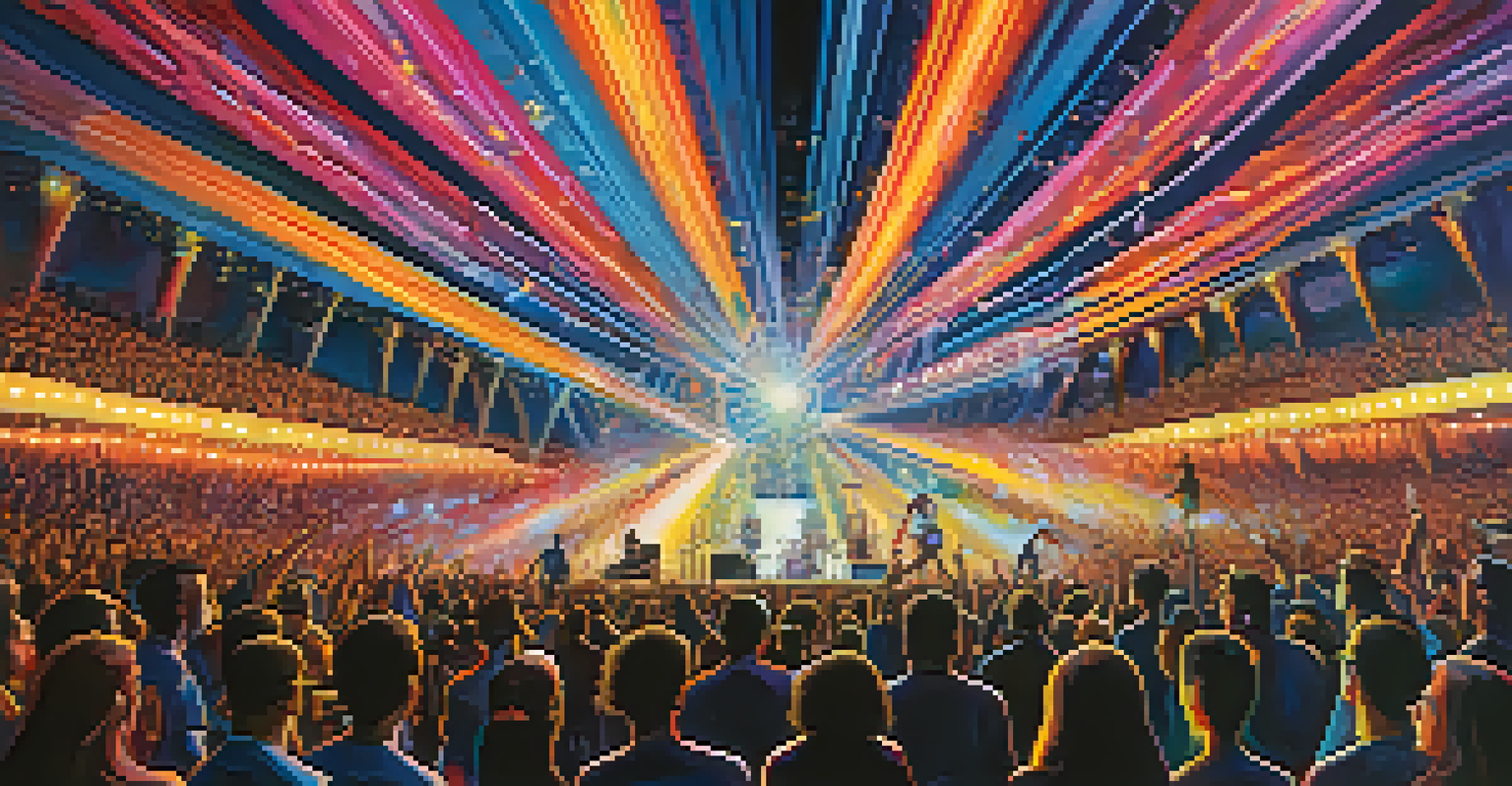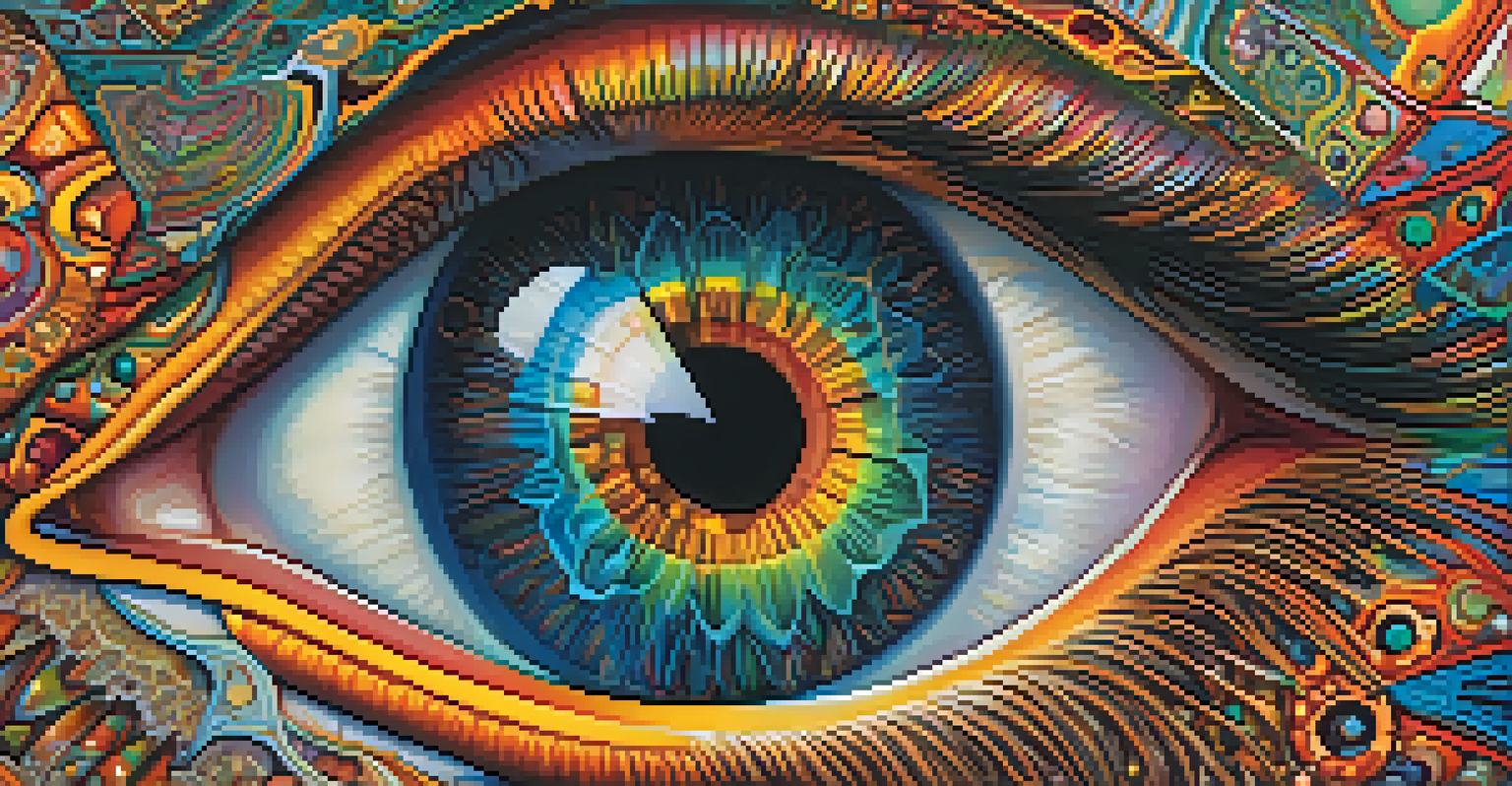Psychedelics in Popular Culture: Influence and Impact

The Rise of Psychedelics in Modern Media
In recent years, psychedelics have found their way into mainstream media, from documentaries to popular films. This resurgence often reflects a growing curiosity about the mind and consciousness. As society seeks answers to mental health challenges, these substances are portrayed in a new light, sparking discussions on their potential benefits.
Psychedelics can help us transcend our ordinary experience of reality and can provide insights into the nature of consciousness itself.
Movies like 'Doctor Strange' and 'The Matrix' use psychedelic imagery to explore altered states of consciousness, captivating audiences with visually stunning narratives. This not only entertains but also raises questions about reality and perception. By blending entertainment with deeper themes, these films encourage viewers to ponder their own experiences and beliefs.
Moreover, documentaries like 'Fantastic Fungi' highlight the therapeutic uses of psychedelics, showcasing their potential in treating conditions such as depression and PTSD. This shift in representation is crucial, as it normalizes conversations around mental health and challenges the stigma surrounding psychedelics, making them a relevant topic in today’s cultural discourse.
Psychedelics and Music: A Harmonious Relationship
Music has long been intertwined with psychedelic experiences, influencing genres like rock, electronic, and even hip-hop. Iconic bands like The Beatles and Pink Floyd famously experimented with psychedelics, resulting in groundbreaking albums that pushed creative boundaries. Their soundscapes often mirror the complexity and depth of psychedelic experiences, inviting listeners into a journey of sound.

Today, artists like Tame Impala and Flume continue this tradition, infusing their music with psychedelic elements that resonate with a new generation. This connection not only shapes the auditory experience but also reflects a broader cultural acceptance of psychedelics. The music becomes a vessel for exploration, encouraging fans to embrace new perspectives.
Psychedelics in Pop Culture
Psychedelics are increasingly featured in mainstream media, sparking discussions about their potential mental health benefits.
Live performances often enhance this experience, with vibrant visuals and immersive environments amplifying the psychedelic vibe. Festivals like Coachella and Burning Man provide platforms for this artistic expression, where the line between music and psychedelia blurs. This symbiotic relationship highlights how music can serve as a gateway to understanding and exploring consciousness.
Psychedelics in Visual Arts: A Creative Renaissance
Visual artists have embraced psychedelics as a source of inspiration, leading to a creative renaissance in contemporary art. Influenced by the vivid colors and intricate patterns often associated with psychedelic experiences, artists like Alex Grey and Peter Max have created works that challenge perception and invite contemplation. Their art serves as a reflection of the inner mind, capturing the essence of altered states.
The mind is like a parachute. It doesn’t work if it isn’t open.
Exhibitions that focus on psychedelic art have gained popularity, showcasing pieces that explore themes of consciousness, nature, and spirituality. These exhibits not only highlight the aesthetic appeal of psychedelic art but also foster discussions about the experiences that inspire such creativity. Visitors are encouraged to engage with the art on a personal level, making the experience more meaningful.
Additionally, the rise of digital art has allowed for the creation of immersive experiences that mimic psychedelic journeys. Artists are using technology to craft virtual environments that transport viewers into otherworldly realms. This innovative approach not only captivates the audience but also pushes the boundaries of artistic expression, merging technology with the exploration of consciousness.
Psychology and Psychedelics: A Growing Fascination
The relationship between psychology and psychedelics has garnered increasing interest in both academic and popular circles. Researchers are exploring how psychedelics can facilitate profound psychological insights, often leading to transformative experiences. This research is challenging traditional therapeutic methods, providing new avenues for understanding mental health.
Psychedelic therapy is being studied for its efficacy in treating various conditions, including anxiety, depression, and addiction. By promoting openness and introspection, these substances may help individuals confront deep-seated issues. This approach aligns with a broader movement toward holistic and integrative mental health practices.
Art and Psychedelics Unite
Visual artists are drawing inspiration from psychedelics, leading to a renaissance that challenges perception and engages audiences.
Documentaries and books on this topic are making complex psychological concepts more accessible to the general public. They demystify the science behind psychedelics, inviting conversations about their potential benefits and risks. By bridging the gap between research and popular understanding, these narratives empower individuals to make informed decisions about their mental health.
Psychedelics and Social Movements: A Catalyst for Change
Psychedelics have historically played a role in social movements, acting as catalysts for change and consciousness expansion. The 1960s counterculture, for example, embraced psychedelics as tools for rebellion against societal norms, promoting peace and love. This legacy continues today, as many activists advocate for the decriminalization and therapeutic use of psychedelics.
Modern social movements often frame psychedelics as part of a broader conversation about mental health and well-being. Advocates argue that access to these substances can empower individuals and communities, fostering resilience in the face of adversity. This perspective highlights the potential of psychedelics to contribute to personal and collective healing.
Additionally, grassroots organizations are emerging to educate the public about responsible use and the benefits of psychedelics. By challenging outdated laws and perceptions, these movements aim to create a more informed society. The intersection of psychedelics and activism illustrates how cultural shifts can pave the way for societal change.
Cultural Representations: Stereotypes and Realities
Despite the growing acceptance of psychedelics, cultural representations often remain steeped in stereotypes and misconceptions. Media portrayals can sometimes depict psychedelics as dangerous or purely recreational, overshadowing their potential therapeutic benefits. This disconnect highlights the need for more nuanced narratives that reflect the diverse experiences individuals have with these substances.
Conversely, some representations glamorize psychedelics, presenting them as a panacea for all mental health issues. This oversimplification can lead to unrealistic expectations and misuse. It's crucial to strike a balance in how these substances are depicted, emphasizing informed and responsible use while acknowledging the complexities surrounding them.
Psychedelics and Social Change
Psychedelics have historically influenced social movements, promoting conversations about mental health and advocating for legal reforms.
As society continues to explore the role of psychedelics, there’s an opportunity to reshape cultural narratives. By amplifying voices of those with lived experiences and promoting accurate information, we can foster a more informed public discourse. This evolution in representation can contribute to a more compassionate understanding of psychedelics and their place in our culture.
Future Trends: Psychedelics in a Changing World
As the conversation around psychedelics evolves, we can expect to see new trends shaping their role in popular culture. The increasing acceptance of these substances may lead to more research, legal reforms, and educational initiatives focused on psychedelics. This shift could create a more informed society that embraces the complexities of mental health and wellness.
Moreover, the integration of psychedelics into wellness practices is gaining traction, with retreats and workshops offering guided experiences. These settings provide individuals with the opportunity to explore their consciousness in a supportive environment. As this trend grows, it may further normalize discussions about psychedelics and mental health.

Finally, we may witness a shift in how art, music, and literature engage with psychedelic themes. As creators continue to explore these substances, their influence may lead to innovative works that challenge our perceptions of reality. This ongoing dialogue will keep psychedelics at the forefront of cultural conversations, encouraging exploration and understanding in a rapidly changing world.